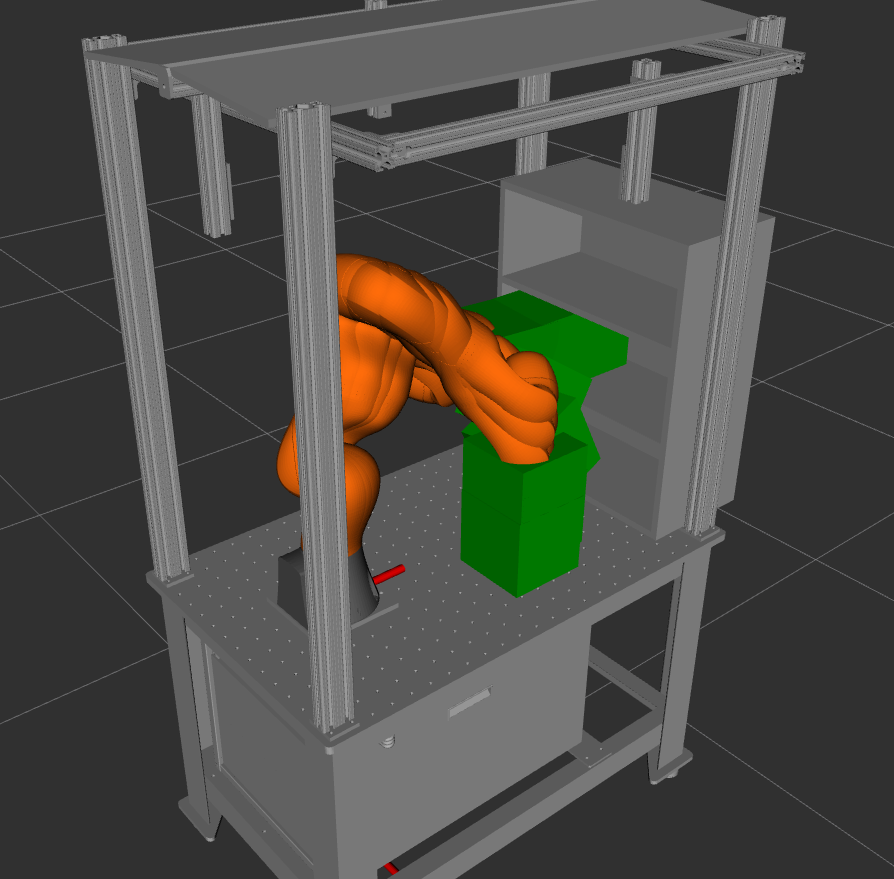Optimization Based Planning Introduction¶
Goal¶
The purpose of these exercises is to implement a ROS node that drives a robot through a series of moves and actions in order to complete a pick and place task. In addition, they will serve as an example of how to utilize more specilized tools such as the optimization based path planner, TrajOpt, and the control interfaces of the KUKA iiwa robot, while also integrating a variety of software capabilities (perception, controller drivers, I/O, inverse kinematics, path planning, collision avoidance, etc) into a ROS-based industrial application.

Objectives¶
- Understand the components and structure of a real or simulated robot application.
- Leverage perception capabilities using PCL
- Learn how to setup a TrajOpt path planning problem
- Learn how to use costs and constraints in TrajOpt
- Learn how to move the arm to a joint or Cartesian position
- Plan collision-free paths for a pick and place task
- Send these trajectories to real robot hardware
Outline¶
- First we will explore the given template code and import it into QT Creator
- We will then use the data from a simulated 3D sensor and PCL to find the top of the box as the pick point
- Next, we will give a conceptual introduction to TrajOpt exploring the procedure for building a problem, adding costs, and solving for a trajectory
- We will then build a series of helper functions for TrajOpt to perform the different parts of a pick and place operation and test in simulation
- With simulation working we will move to a real 3D sensor, learning to calibrate it and testing it in conjunction with a simulated robot.
- Finally, we will move to a physical robot with a real 3D sensor.
